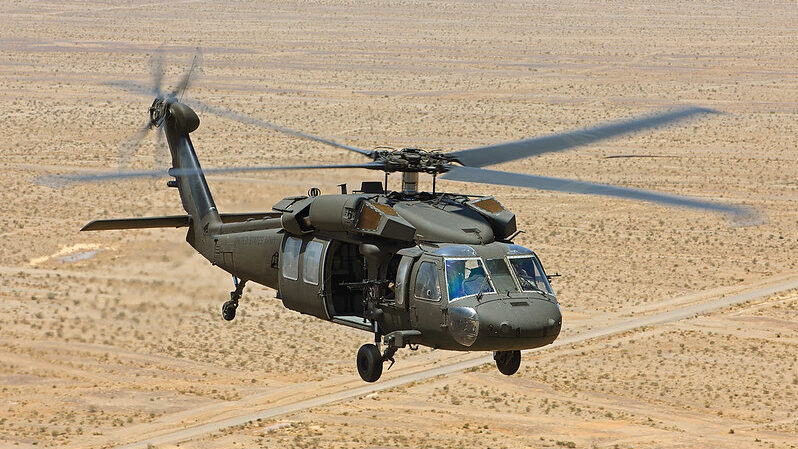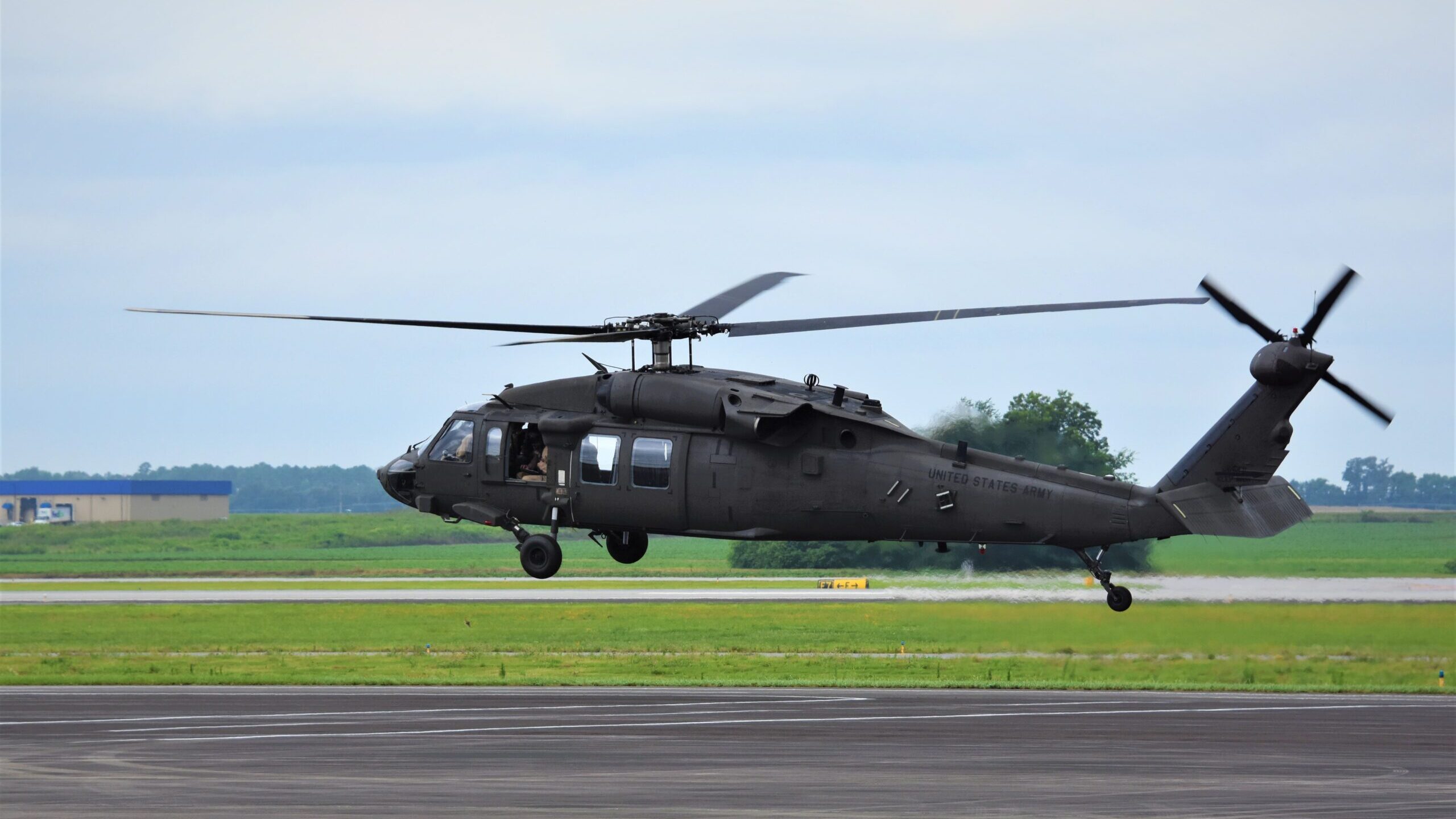Just How the UH60 Remains To Serve as a Backbone in Global Defense Workflow
Just How the UH60 Remains To Serve as a Backbone in Global Defense Workflow
Blog Article
Comprehending the UH60: The Ultimate Armed Force Helicopter Experience
The UH-60 Black Hawk helicopter stands for a critical evolution in army air travel, incorporating durable engineering with diverse operational capabilities. Its design provides to an array of objectives-- from army transportation to clinical emptying-- demonstrating its adaptability across diverse battle circumstances. As we explore the history, specifications, and technological innovations of the UH-60, it comes to be noticeable that its duty in forming contemporary military strategies is both significant and far-reaching. This discussion welcomes a better assessment of how this remarkable airplane continues to affect modern warfare characteristics.
Background of the UH-60
Arising from the requirement for a functional utility helicopter during the late 1960s, the UH-60 Black Hawk was developed by Sikorsky Airplane Firm in reaction to the united state Army's need for a modern-day field of battle transportation helicopter. The design procedure commenced in 1972, culminating in its initial flight in October 1974. The Black Hawk was engineered to change the aging UH-1 Iroquois, also referred to as the "Huey," which had actually been a staple of Army air travel since the Vietnam Battle.

For many years, the Black Hawk has gone through various upgrades, preserving its significance in contemporary armed forces procedures. Its success has actually caused the advancement of different versions, serving multiple branches of the united state army and allied forces worldwide, establishing the UH-60 as a foundation of military aviation background
Trick Features and Specs
The UH-60 Black Hawk is differentiated by its sophisticated design and robust specifications, which add to its adaptability on the field of battle. This multi-role helicopter features a twin-engine configuration, powered by 2 General Electric T700-GE-701C engines, supplying an optimal outcome of 1,800 shaft horsepower each. This effective engine configuration enables the Black Hawk to reach an optimum rate of roughly 183 knots (211 mph) and a solution ceiling of 19,000 feet.
The airplane's composite rotor blades offer extraordinary lift and maneuverability, while its four-blade major rotor system improves stability (UH60). The Black Hawk is equipped with sophisticated avionics, including an electronic cockpit and night vision capacities, making sure effective procedures in diverse conditions. Its cabin can suit as much as 11 soldiers or bring approximately 8,000 extra pounds of cargo, making it ideal for various logistical demands
The UH-60's modular style enables very easy maintenance and upgrades, making certain longevity and flexibility in developing military demands. Additionally, its sophisticated survivability features, such as crashworthy seats and armor, boost team safety during goals. In general, the UH-60 Black Hawk stands for a substantial improvement in armed forces air travel technology.
Functional Functions and Missions
Flexibility is a characteristic of the UH-60 Black Hawk, enabling it to perform a vast range of functional functions and goals across different army environments. Mostly made for troop transport, the Black Hawk can carry as much as 11 soldiers go to the website and is regularly utilized in air assault operations, permitting fast insertion and removal of ground pressures in contested areas.

In addition to army transport, the UH-60 is proficient at medical emptying (MEDEVAC) missions. Outfitted with innovative clinical tools and employees, it can promptly leave wounded soldiers from the battlefield, considerably improving survival rates in essential situations. The helicopter also plays an essential role in logistics support, delivering materials, ammo, and devices to ahead operating bases in austere atmospheres.
Moreover, the Black Hawk acts as a platform for special procedures goals, including reconnaissance and direct activity. Its capability to operate in different terrains and its low-flying capabilities make it an important asset for devices conducting covert procedures.

Technical Developments
Advancement in aviation modern technology has significantly improved the capacities of the UH-60 Black Hawk, guaranteeing its relevance in modern-day armed forces procedures. The helicopter is equipped with innovative avionics systems that supply pilots with superior situational recognition, including multi-functional screens, boosted GPS, and innovative surface understanding systems. These attributes allow specific navigating and objective implementation, even in difficult settings.
Furthermore, the combination of digital communications systems enables instantaneous and protected details exchange between systems, promoting coordinated procedures. The UH-60's upgraded blades systems and composite products contribute to improved efficiency, providing better rate, agility, and decreased upkeep prices.
Furthermore, advancements in weapon systems, such as the capability to release precision-guided artilleries, boost the Black Hawk's function in fight scenarios. The helicopter's capability to support clinical discharge objectives is additionally bolstered by new medical devices and innovations, making sure reliable patient care en route.
Lastly, ongoing improvements in stealth technology and noise reduction mechanisms further solidify the UH-60's performance have a peek here in concealed procedures, permitting it to run in aggressive areas with a decreased probability of discovery. Jointly, these technological developments emphasize the Black Hawk's enduring prestige in army air travel.
Influence on Modern War
Improved capabilities of the UH-60 Black Hawk have actually exceptionally influenced modern-day warfare techniques and tactics. Its convenience in army transport, medevac operations, and reconnaissance roles has actually redefined the functional landscape for military pressures. The helicopter's ability to operate in varied environments, from city settings to tough surfaces, enables better tactical versatility, enabling leaders to adjust promptly to altering battlefield problems.
The UH-60's advanced avionics and interaction systems enhance situational awareness, promoting real-time intelligence sharing and control among devices. This capability is critical in contemporary crooked warfare, where quick decision-making can identify the end result of interactions. The helicopter's ability for quick insertion and extraction of unique procedures forces has actually come to be a hallmark of contemporary armed forces projects, stressing speed and precision.
In Addition, the Black Hawk's integration with unmanned airborne systems and other sophisticated modern technologies signifies a shift towards multi-domain operations. Consequently, the UH-60 not just functions as a vital possession in traditional conflicts however also plays a crucial duty in counterinsurgency and peacekeeping missions, underscoring its long-lasting effect on contemporary armed forces teaching and the development of war.
Conclusion
The UH-60 Black Hawk stands for a peak of military aeronautics, characterized by its adaptability, progressed design, and durable layout. Its capacities in army transportation, clinical discharge, and logistical support highlight its Your Domain Name necessary duty in modern-day army operations. Continual technological improvements and enhancements have more strengthened the Black Hawk's strategic significance, enabling quick reaction and versatility in diverse combat scenarios. Ultimately, the UH-60 continues to be an indispensable asset, shaping the landscape of modern war and operational effectiveness.

Development in aeronautics technology has significantly improved the capacities of the UH-60 Black Hawk, ensuring its relevance in contemporary army operations.The UH-60 Black Hawk stands for a pinnacle of armed forces aeronautics, identified by its flexibility, advanced design, and durable layout.
Report this page